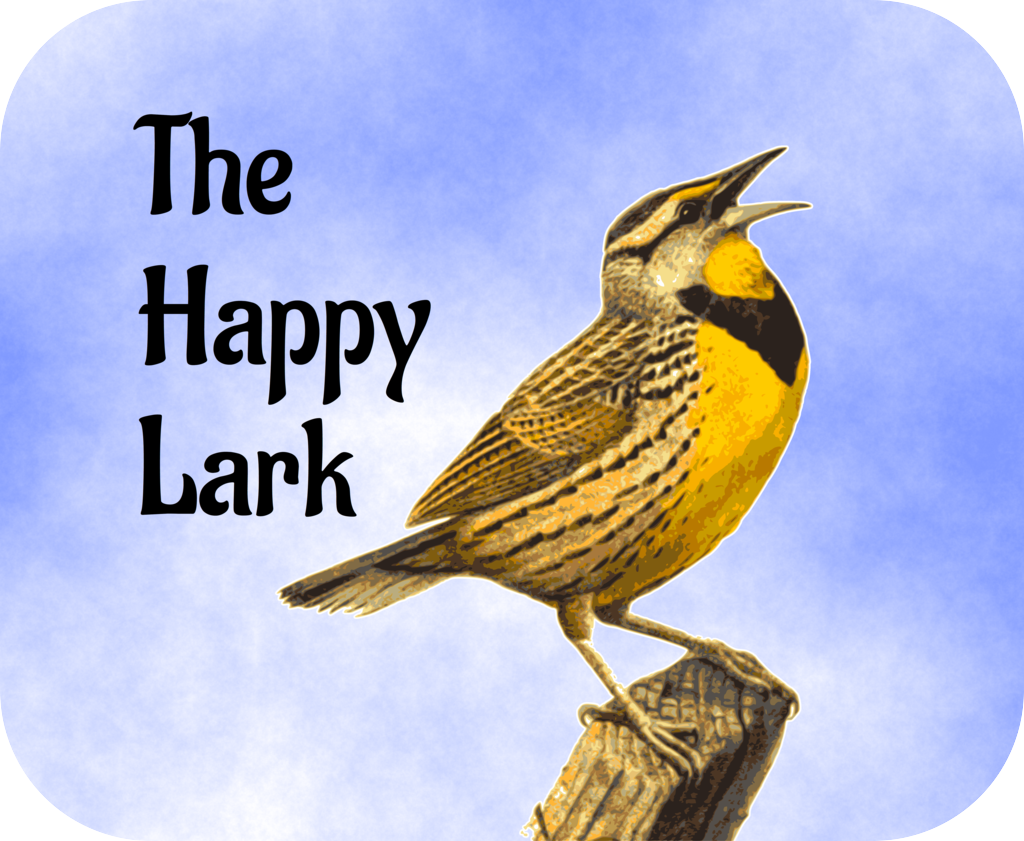The The Happy Lark Story
I realized one day that the reason I don't like solo computer games is that they are at heart intentionally horrible user interfaces. I use computers to make my life easier. The job of a computer is to solve problems for me whenever possible. Solo computer games require me to do something, e.g. move my finger in a certain way and touch and release at particular times, in order to score points and "win." But the computer knows how I would need to touch and move in order to score, so for a good user interface it should do all that for me.
Some games do involve an element of chance — perhaps a shuffled card deck — and so the computer might not be able to win for me even with the best algorithm.
If there is a skill involved, it should be a skill I should be able to apply in the real world, not just in this or other computer games.
There's also the question of "lives" and moving up through levels in games. Why should you have some number of "lives"? When I had an Apple ][, I was annoyed at the games I was given by a friend. I didn't want to waste my time getting good at steering a snake or shooting at patterns in order to see and experience the higher levels. So I broke into the memory and ran a machine code routine to find subroutines which generated sound. Then I would call each subroutine until I heard the "Wah-wah-wa" sound that game made when you "died." Then I'd find where that death-sound code was being called from. Somewhere near that point there would be a decrement counter instruction.
I would replace that decrement counter instruction with NOPs, and have infinite lives. Then I could reach high levels without actually being good at the game. This taught me two valuable lessons: I learned about how computers worked on a machine-code level, and I learned about playing games with unlimited lifetimes.
So I present The Happy Lark
Four games:
- A game of skill the computer can always win for you.
- A game with an element of chance — with an immediate result or a win or a loss after a time of Dramatic Tension.
- A game which requires you to take an action to win.
- An "educational" game and parable in which you must learn an alphabet — the Arabic, Cyrillic, Devanagari, Greek, Hebrew, Latin, Runic (Futhark), or Morse Code patterns — before you "die", progressing through levels as you improve.
Developed quickly using Appcelerator Titanium Alloy
The Happy Lark Sources
The Lark image is actually an Meadowlark, not actually related to the European Lark. It's derived from "Carol the Meadow Lark" by Louis Agassiz Fuertes in The Burgess bird book for children (1922), Burgess, Thornton W. (Thornton Waldo), 1874-1965; Fuertes, Louis Agassiz, 1874-1927. Other birds from this book are also used as messengers in the game. Affirmations and positive thoughts are accompanied by bird illustrations primarily by John James Audubon (1785–1851).
The logo font is the Google font Aladin by Sudtipos.
The Prizes are affirmations and positive thoughts collected from the Internet, a link to a page from the Astronomy Picture of the Day, a definition from The Devil's Dictionary by Ambrose Bierce (1911), a page from The Rubáiyát of a Persian Kitten by Oliver Herford (1904), an entry from the Toaster's Handbook by C. E. Fanning and H. W. Wilson (1916), a work from The Complete Works of Josh Billings, by Henry W. Shaw (1876), or a story or poem from the ten-volume Wit and Humor of America, edited by Marshall P. Wilder (1911).
